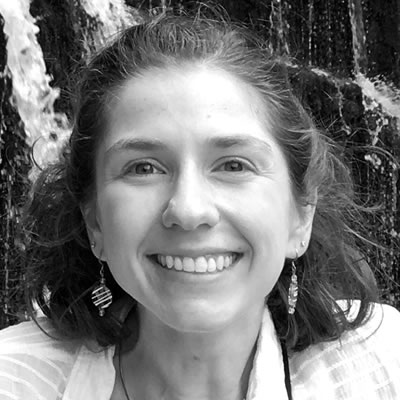In the past few years, Theaster Gates has established himself as one of the fine arts world’s biggest stars. Born and raised here in Chicago, he has made his name as “social practice installation art” in the oft-neglected neighborhoods of the South Side. In the process, Gates has become a force behind the celebration and preservation of Black history in Chicago.
We research stories from Chicago history, architecture and culture like this while developing our live virtual tours, in-person private tours, and custom content for corporate events. You can join us to experience Chicago’s stories in-person or online. We can also create custom tours and original content about this Chicago topic and countless others.
Stony Island Arts Bank
Take his Stony Island Arts Bank for example. The institution is in a former bank on South Stony Island Avenue which Gates purchased from the city for $1. He and the Rebuild Foundation have since turned it into a gallery and community center. And it houses some incredible resources that are very valuable for the study of black history. They have the record collection of Frankie Knuckles, the “godfather of Chicago house.” You can also visit the Johnson Publishing Archive, which includes books and periodicals from the publisher of Ebony and Jet magazines.
How Theaster Gates Came to Connect Art and Urban Renewal
Theaster Gates, the only boy and youngest of nine children in a working class family, grew up in East Garfield Park. A profile of him in The New Yorker sheds some light on how his youthful experiences influenced his later interests.
“By the time Gates was a teen-ager, gangs and crack ruled, and the city addressed the problem by bulldozing historic buildings that were being used as drug dens. ‘Growing up, I’m watching the West Side get systematically deconstructed, Gates recalls. ‘I’m watching the destruction of the most beautiful buildings in my neighborhood.'”
After graduating from Lane Tech College Prep High School on Chicago’s north side, Gates acquired a dizzying number of degrees. He earned a B.S. in Urban Planning from Iowa State University, an M.A. in Fine Arts and Religion from Cape Town University, and a multidisciplinary M.S. in urban planning, religion, and ceramics from Iowa State (again). Personally, I felt burned out after getting my M.A. from the University of Chicago. The idea of chasing down all those post-graduate degrees just makes me want to nap!
Gates focused his arts studies in pottery and it landed him a job as an arts programmer at UChicago in 2006. He moved into Grand Crossing and, almost by accident, began a project of arts-based urban renewal.
Rebuilding Chicago Through Art
Upon moving into Grand Crossing, Theater Gates bought a former candy store. His plan was to make it into a personal pottery studio and living space. Instead, he eventually gutted and rehabbed the candy store. He filled it with thousands of vinyl records acquired from a closed record store, dubbed it the Listening House, and opened it to the public.
Gates did a similar gut-and-rehab project on a neighboring building. He filled it with books from a closed store on Prairie Avenue and the university’s glass lantern slide collection. This building is named the Archive House and, along with the Listening House, forms the core of the Dorchester Projects.
Gates used the Dorchester Project as the basis for the Rebuild Foundation. The foundation describes itself as “platform for art, cultural development, and neighborhood transformation. Our projects support artists and strengthen communities by providing free arts programming, creating new cultural amenities, and developing affordable housing, studio, and live-work space.”
The idea, at its base, combines several threads of Gates’ experiences. The foundation buys and redevelops buildings in historically black neighborhoods. The resulting cultural venues help organically regenerate the surrounding community. It’s a bottom-up and constructive form of urban renewal and historic preservation.
Does Theaster Gates Provide a Model for Renewal?
The Rebuild Foundation has revitalized over a dozen dilapidated buildings, and not just in Chicago. They have projects in Omaha, Nebraska, St. Louis, Missouri, and Gary, Indiana. Their work has created 50,000 square feet of new residential space and 75,000 square feet of commercial space, including public venues for cultural programs and affordable live/work spaces for artists.
Disaster lurks around every corner when you consider the history of urban renewal in Chicago. City Hall has typically been pretty bad at handling big renewal projects. Just ask anyone who has taken a Downtown Bucket List private tour where we talk about the disastrous redevelopment of Block 37.
Even worse, the city’s housing history is fraught with racism, injustice, and plain-old poor planning. All of that has led to concentrated poverty in the old projects and a lack of development in Black and Latino neighborhoods. Any and all spaces adjacent to downtown have been gentrified. As Theaster Gates noted, the city was also actively involved in the destruction of historic buildings in many Black and Latino neighborhoods.
This civic incompetence and neglect has created huge swathes of blight within Chicago. That blight destroys a neighborhood’s communal feeling and sense of its own history. Much of the city’s violence is concentrated in these neighborhoods, which is not at all a coincidence. We can touch upon many of these themes during a private Neighborhoods Tour custom designed to roll past the Gates’ Currency Exchange Cafe.
In my opinion, officials at every level should be looking for more opportunities like the Stony Island Arts Banks. It should be an easy decision between focusing on Theaster Gates-style arts-based renewal and “sending in the Feds.”
–Alex Bean, Content Manager and Tour Guide
ABOUT CHICAGO DETOURS
Chicago Detours is a boutique tour company passionate about connecting people to places and each other through the power of storytelling. We bring curious people to explore, learn and interact with Chicago’s history, architecture and culture through in-person private group tours, content production, and virtual tours.




















